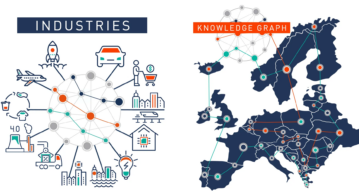Forget OSI Layers — it’s the customer experience or nothing in today’s enterprise networks
The complexities of today’s enterprise’s IT infrastructure are probably only fully understood by those people charged with ensuring their continuation, reliability, and management — an organization’s IT function. Therefore, it follows that the sudden and rapid pressure IT systems have been under since the Coronavirus outbreak is similarly not fully appreciated.
In specific sectors, too — like supply chain, logistics, and delivery — the same circumstances have conspired to increase demand hugely. DoorDash, the food delivery service, for example, faced a considerable spike in need(PDF) for its services in March 2020, one exacerbated by the cashflow-sensitive nature of the restaurant industry it partners.
Regardless of how far down the digital transformation journey the larger enterprise might have been at the beginning of the year, any reliance by logistics and supply chains on legacy on-premise platforms will have been punished. The poor performance of IT systems at any point in the E2E value chain negatively impacts customer fulfillment metrics, delivery times and produces what the marketing guys term “negative customer experiences.”
When end-users get a second-rate experience, a competitor’s service is usually only a screen tap or click away. So, despite the complexity of IT infrastructure, getting the sum of the component parts running smoothly is the primary concern of any online organization.
Connecting the dots
At the core of any network — including the biggest system of them all, the internet — are the connections between machines. Ensuring that data traffic can pass safely and as quickly as possible is considered a foundation for any business or non-profit today. If the connectivity isn’t right, organizations can throw millions of dollars at software and hardware, and end-users will still receive lackluster performance.
Co-coordinating complex supply chains means seamless connectivity between logistics, warehouses, distribution centers, delivery companies, suppliers, and customers waiting at home for deliveries. Hyper-local fulfillment, just-in-time stock control management, and same-day delivery mechanisms rely on the most advanced technologies on the market today. But it’s imperative, operationally speaking, that the technology is both simple to manage (despite those complexities) and secure, despite the underlying complexity.
What were once static configurations that were troublesome to scale up could be left behind by dint of the same API-first approaches that allow individual parts of global supply chains to interconnect. Hundreds of Terraform config files can be parsed by CDN systems, replicating internal structures across more elastic cloud provisions, for example.
Point-to-point links and fragile site-to-site VPNs can be replaced by optimizing traffic routing, for example — with the outcome being faster, safer connections. The internet was designed with a certain amount of self-configuration and route discovery built-in, but some providers can improve these protocols. Furthermore, those providers can layer-in other provisions such as security oversight: prevention of DDoS attacks (distributed denial of service) and data packet examination and ‘cleaning,’ to suggest just a couple.
Conclusions and a look forward
At the end of the day, it’s all about performance — well-performing infrastructure reduces inefficiencies, allows elasticity, provides excellent value for money, and produces those important high-quality customer experiences. IT’s performance touches every part of the business, of course, it’s just that when something extraordinary happens, like a massive surge in online retail, thanks to a certain virus, any cracks begin to show.
This year, the lucky ones have been companies like Shopify, a household name that powers over a billion online storefronts. With some canny partnerships and smart technologies, it’s not only weathered seasonal demand spikes before but had the infrastructure in place to weather the worst of this year’s storm.
In a series of articles, we’ll be looking at some of the common challenges faced by IT Departments across the globe in every sector and some of the solutions available to help them around those pain-points. From the simplest of system-on-chip devices up to the massive cloud-based server instance, via the optical connections between the business and the internet backbone, there are literally thousands of systems that can make maintaining all that complexity a whole lot easier. Luckily, you, as a reader, don’t have to wade through everything that’s one offer: we at TechHQ will do that for you. Instead, we’ll present just a few large-scale providers that can solve some of the most affecting problems organizations can face, from security threats through optimized internet connectivity.
Over the course of articles over the next six weeks, we’ll be addressing the significant pain points touched on above, seeking out the vendors and their solutions to ensure the continued working of any business, regardless of size.
First in the series is Cloudflare: provider of connections capable of replacing traditional VPNs, IoT traffic curator, and the go-to name in CDN provision.









